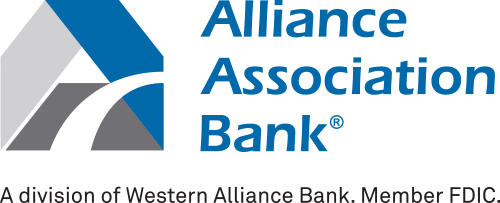What Are Organization Governing Documents?

Organization governing documents play a vital role in a company or association's structure, procedures, and regulations. Without these essential documents, the organization wouldn't have a proper framework to handle issues. All members must know what these documents include and how they impact each person and the organization as a whole.
Browse By Category
Sign up for Our Newsletter
Organization governing documents play a vital role in a company or association’s structure, procedures, and regulations. Without these essential documents, the organization wouldn’t have a proper framework to handle issues. All members must know what these documents include and how they impact each person and the organization as a whole.
A List of Organization Governing Documents
The framework, processes, and regulations that guide an organization appear in its governing documents. Without these papers, the organization would lack recourse for addressing problems or challenges and would be constantly dependent on the choices made by the majority. This would disrupt the organization’s fragile structure. Through these governing documents, the company can secure the safeguarding of member rights, including those of the minority.
An organization generally has four governing documents: the corporate charter, the constitution and bylaws, the rules of order, and the standing rules.
What Is a Corporate Charter?
For an organization to act as a corporation, it needs to get approval from the state or federal government by obtaining a corporate charter. This document includes important information like the organization’s legal name, address, and purpose.
Incorporation with the state is important because it allows the organization to do various legal activities. These activities include owning property, making binding contracts, taking legal actions, and protecting members from personal liabilities when performing their duties. Incorporation also gives the organization a recognized legal status, the ability to have a corporate seal, and ensures that it continues to exist as an organization.
To start the incorporation process, the organization should hire a local attorney who knows the state laws. The attorney will create the incorporation papers, including details like the organization’s name, headquarters, purpose, and amendment procedures. Other information includes the number of yearly meetings, choosing a board of directors, whether it’s nonprofit or for-profit, authorized real estate holdings, and how long it will exist.
Once the final draft is ready, members sign the document, which the organization sends to the secretary of state. Some states may require extra documents like nonprofit or for-profit bylaws. The finished document could be called the Articles of Incorporation, Certificate of Incorporation, or Articles of Association. This document is legally binding and takes precedence over other organizational documents.
After getting incorporated, it’s important to keep the corporate charter handy and refer to it regularly when suggesting changes to other governing documents. This ensures everything stays in sync and prevents conflicts between the corporate charter and later organizational rules.
What Is the Constitution and Association Bylaws?
The rules for how an organization works are found in its constitution or bylaws. Unlike parliamentary procedures, this document focuses on how the organization is set up internally. The bylaws explain the organization’s basic features, its operational rules, and how the assembly and individual members interact within the larger organization. Changing these rules is a big step and requires advance notice and a specified majority vote.
What Are the Rules of Order?
Organizations should follow meeting rules, such as Robert’s Rules of Order. However, they can choose to do things differently in some areas. This is where rules of order come in.
These rules cover how meetings are conducted and the responsibilities of officers. They include special ceremonial steps, different meeting sequences, election procedures, or adjustments for online meetings.
When organizations want procedures not in the recommended rules, they refer to rules of order. It’s important, though, that any new rules still follow the basic parliamentary laws. This helps protect the rights of minority members and those who can’t attend the meetings. However, this document doesn’t need to include common parliamentary rules.
If an organization adds rules of order to its bylaws, it may temporarily stop these rules if necessary. However, members can’t suspend other bylaws that control the organization’s operations unless those bylaws specifically allow it.
What Are Standing Rules?
Standing rules are the guidelines that manage how an organization runs. They are set up through main motions and stay in effect until changed or canceled. Usually, they cover things like when meetings happen.
These rules are approved by most members voting. They may stop for one meeting with most members agreeing or cancel with two-thirds of members agreeing without notice or most members agreeing with notice. The organization keeps track of these rules in a book called “Standing Rules” to keep things consistent and help new leaders and members.
If an organization does things in a certain way because of tradition, it’s important to write down these customs to avoid confusion. Whether they appear in writing or just how things have always been done, a formal motion is necessary to cancel a custom, treating it like the assembly made that decision. Organizations might use terms like “Guidelines” or “Policy Statements” instead of “Standing Rules.”
An assembly needs a two-thirds vote to stop rules of order. Changes need a two-thirds vote with notice. On the other hand, standing rules may halt for one meeting with most members agreeing. Canceling them requires two-thirds of members agreeing without notice or most members agreeing with notice.
Contents of Nonprofit Bylaws
An organization’s bylaws typically contain the following points:
- Name. Don’t repeat the organization’s name in the bylaws if it’s already in the constitution or incorporation papers.
- Purpose. The purpose should be short, usually just a sentence, or separated by semicolons if it’s long. The purpose sets limits on what members can bring up in meetings.
- Members. This part explains what members must do, what’s expected of them, and their rights. It covers all the important info about members, like types of members, how to become one, any fees, rules for behavior, staying a member, and leaving.
- Officers. Here, you find a list of officers in order of importance. It also discusses picking and electing officers, including what they need to qualify for, how long they stay in office, and more.
- Meetings. This part discusses when meetings must happen, how many people need to be present (quorum), how to hold special meetings, cancel regular ones, and handle online meetings.
- Executive Board. Here, you learn about the board — how many people are on it and how to fill empty spots. It also covers board meetings, getting rid of officers, and what happens if there’s an empty seat. This part also says what job board members have. Remember, members can’t take away jobs given to the board by the bylaws.
- Committees. The bylaws should list all the regular committees. This section also tells you how many people are on each committee, what they need to do, how long they stay on it, and who can join. Other things to know include how to start a new committee, fill empty spots, spend money, quit, and more.
- Parliamentary Authority. This part says which rules the organization follows for meetings.
- Amendments. This section explains how to change the bylaws.
How to Write Bylaws Effectively
The bylaws are very important for how the organization works. But, when making them, it’s easy to mess up and cause problems for the whole organization. Here are some tips for writing bylaws.
- Write down what happens if the organization has to close.
- Add an indemnity clause to protect the organization in certain situations.
- Keep it easy to understand.
- Don’t say the same thing over and over, and keep away from confusing legal terms.
- Make sure no one can twist the meaning when quoting the rules.
- Each sentence should make sense on its own without needing the ones before or after.
- If the organization is new, keep the bylaws basic. You can always change them later as you figure things out.
- Review the bylaws often to check if they need updating.
- Ask a lawyer or someone who knows a lot about meetings to help with the bylaws.
Organization Governing Documents Explained
The success of any organization relies on its governing documents. Each document has a unique role, defining legal status and establishing internal rules and procedures. However, creating, reviewing, amending, and interpreting these documents can be challenging.
Up Next:
- Robert’s Rules Of Order Amending Documents: A How-To Guide
- A Brief Guide To Special Rules Of Order In Robert’s Rules
- Robert’s Rules Of Order Suspension Of Rules: An Explainer
Trending Now
Related Article
Sign up for Our Monthly Newsletter
Sign up below for monthly updates on all HOA Resource
















